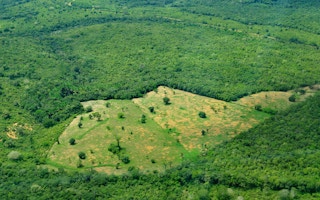Over the past decade, banks, fund managers, and others funneled more than $8 billion into investments aimed at delivering measurable environmental benefits as much as financial returns, according to a new report prepared by the NGO Forest Trends’ Ecosystem Marketplace initiative.
The findings of the report suggest that “conservation investing” — which focuses on sustainable forestry, agriculture, fisheries, habitat, and water initiatives — is emerging as a key component of so-called “impact investment” strategies, and that these emerging asset classes represent a valuable addition to portfolios.
Conservation investing has undergone a period of dramatic growth over the past two years, Forest Trends found, as the total amount of private capital committed to conservation efforts since 2004 climbed 62 per cent after 2013, from $5.1 billion to $8.2 billion.
Investments in sustainable food and fiber account for the vast majority of total funds committed, some $6.5 billion. Meanwhile, $1.3 billion went to habitat conservation initiatives, and investments in efforts to improve water quality or quantity totaled another $400 million.
What’s more, Forest Trends reports, investors appear to be confident that this is money well spent. The report was based on survey responses from 128 banks, companies, fund managers, family offices, and non-governmental organizations, most headquartered in North America and Europe.
“
The only thing keeping these emerging asset classes from surging even higher is the scarcity of investable opportunities; and, as in any emerging market, transparent information is critical.
Michael Jenkins, founding president and CEO, Forest Trends
Of the investors surveyed, 31 per cent said they anticipate rates of return between five and 9.9 per cent. Among for-profit respondents to the survey, half expect returns of 10 per cent or more, meaning that conservation investments are apparently performing well compared to traditional investment strategies.
“The findings of this report speak to the growing recognition of our forests, our wetlands, our reefs, and other natural landscapes as smart investments — a notion that would have been unthinkable to most mainstream investors just five years ago,” Michael Jenkins, Founding President and CEO of Forest Trends, said in a statement.
“Just in the last two years covered by this report, we’ve seen a huge leap in demand for these kinds of tangible ‘real assets’ from investors. The demand is growing across the globe and from across investment instruments — the only thing keeping these emerging asset classes from surging even higher is the scarcity of investable opportunities; and, as in any emerging market, transparent information is critical.”
Forest Trends estimates that more than $3 billion in additional private capital remained uncommitted in 2015 as investors continued to seek out deals that met their criteria for both env`ironmental and financial returns.
A majority of respondents to the survey identified a lack of deals with the right tradeoffs between risk and reward as the biggest obstacle to the growth of the conservation investing sector, though almost all investors surveyed said they plan to raise or reallocate more capital for conservation-oriented investments in the next three years than they did in the previous three.
Most investments in habitat and water conservation are concentrated in North America, Forest Trends said, though private capital is beginning to reach emerging markets, as well.
Private financing for sustainable food and fiber production was more evenly dispersed, with 33 per cent going to North America, 29 per cent to Latin America, 19 per cent to Oceania, and about nine per cent each to Africa and Asia.
Sustainable forestry initiatives in Latin America, in particular, have seen a large infusion of funds in recent years, as annual investments quadrupled between 2009 and 2015.
“This report shows that when investors derive consistent financial returns and measurable benefits to people and nature, more capital then flows to conservation,” Marc Diaz, managing director of NatureVest, The Nature Conservancy’s conservation investing unit, said in a statement.
“This increasing demand, coupled with the very clear need for conservation action shown by scientific research, reinforces the urgent importance for the industry to develop scalable and consistent opportunities to invest in nature.”
Camilla Seth, executive director for sustainable finance at JPMorgan Chase & Co. and an advisory committee chair for the Forest Trends report, added that her firm provided founding support to NatureVest specifically to help spur development of the burgeoning conservation investment market.
“Our clients are looking for these opportunities,” she said, “and we are learning from and are encouraged by the innovation and measurable market growth documented in this Ecosystem Marketplace report.”
This story was published with permissiom from Mongabay.com










